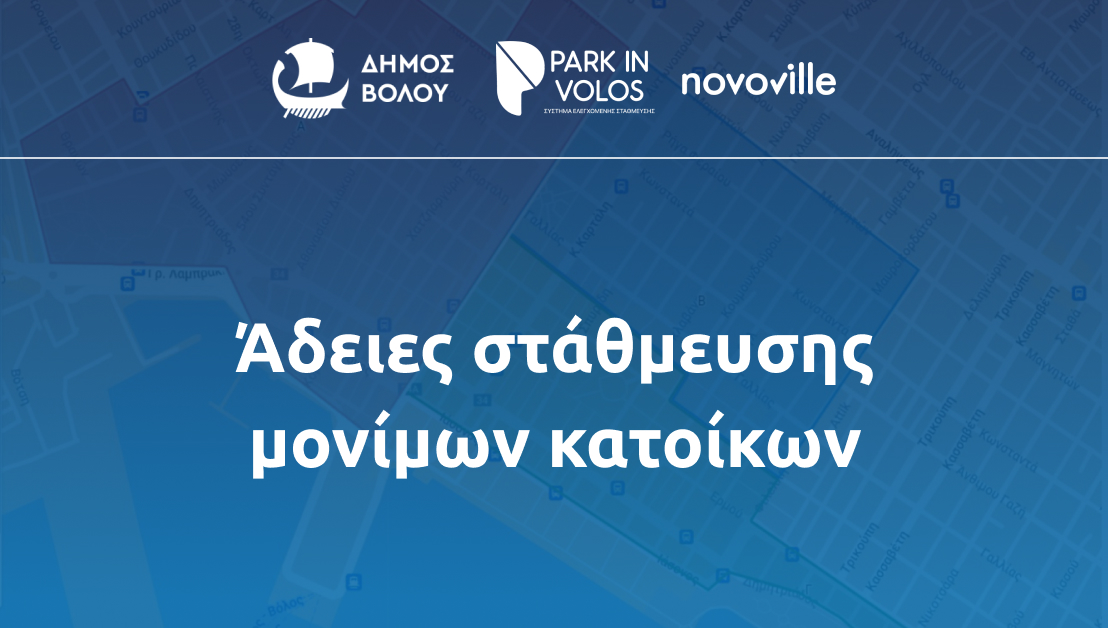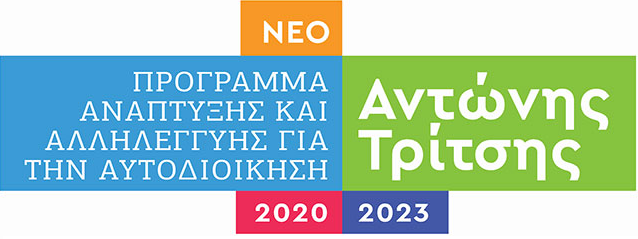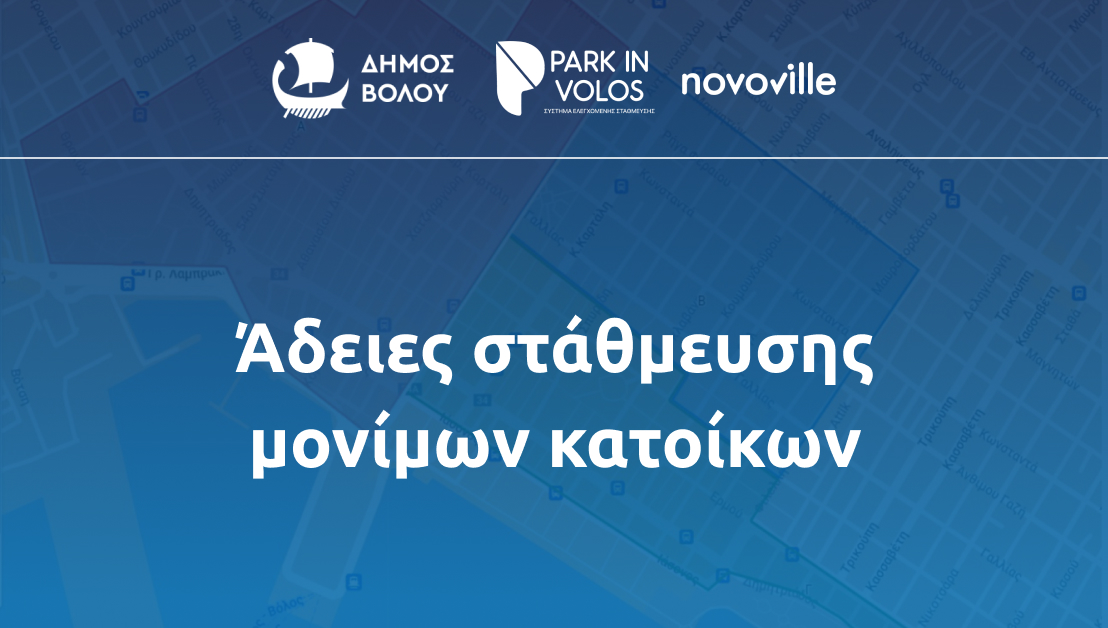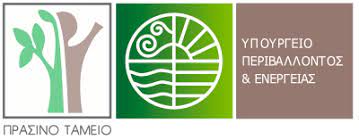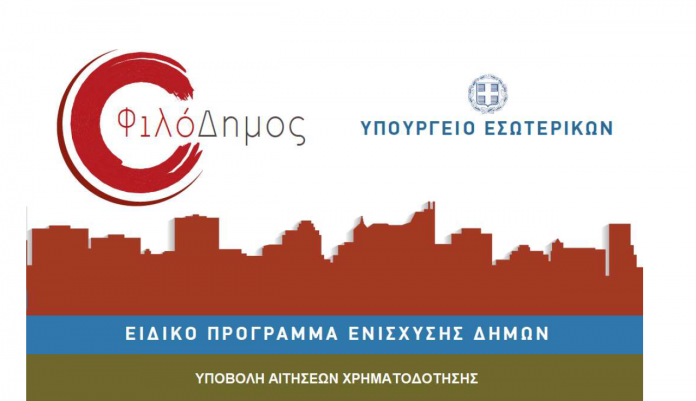LANDMARKS
UNIVERSITY OF THESSALY - PAPASTRAGOS COMPLEX

The former tobacco storehouses of Papastratos on the beach of Volos, housing sections of the University of Thessaly and two organized conference rooms.
TEMPLE OF CONSTANTINOS AND HELEN

The temple of Ag. Konstantinou, built in 1936 at the designs of the architect Aristotle Zachos. Its elaborate architecture, combined with its key position on the beach of Volos, made the Temple a reference point of the modern city.
PARK OF SAINT KONSTANTINOS
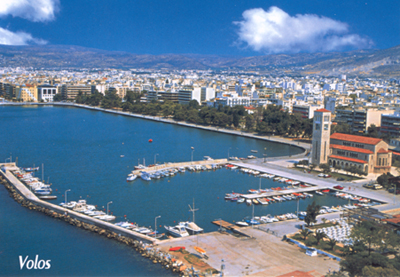
It is the former George I Square "on the beach of Volos. It was formed in a recreational park in the 1920s in designs by architect N. Kitsikis.
BANK OF GREECE

It was built in 1930 in a neoclassical style that characterized the architecture of public buildings of that time.
ACHILLEON
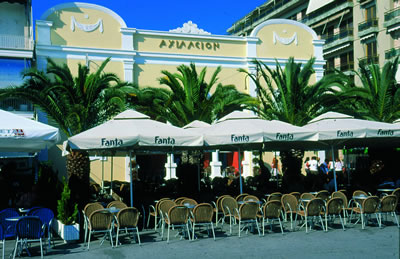
Achilles Cinema Theater was built in 1925 in designs by the volitional architect K. Argyris. It continues its operation to this day.
TEMPLE OF SAINT NICOLAS
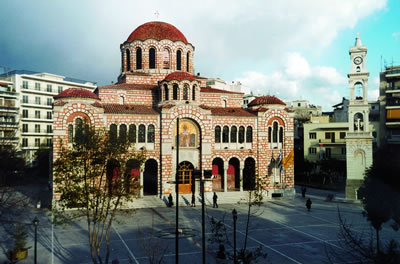
The Metropolitan Temple of the city, the first of the three churches designed by Arch. Zachos in Volos was finished in 1934. The old bell-tower, preserved by the Italian sculptor Previsan in 1884, is preserved in the courtyard of the church.
THE PELION TRAIN
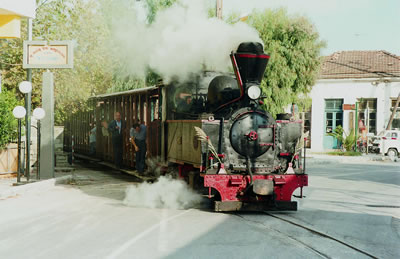
The legendary Moutzouris began his charming journey to Pelion in 1895. The line was designed by Italian engineer Evaristo de Chirico and is a technological achievement of his time. Today he continues to offer his services starting from Lechonia and finishing SS Milion.
RAILWAY STATION OF VOLOS
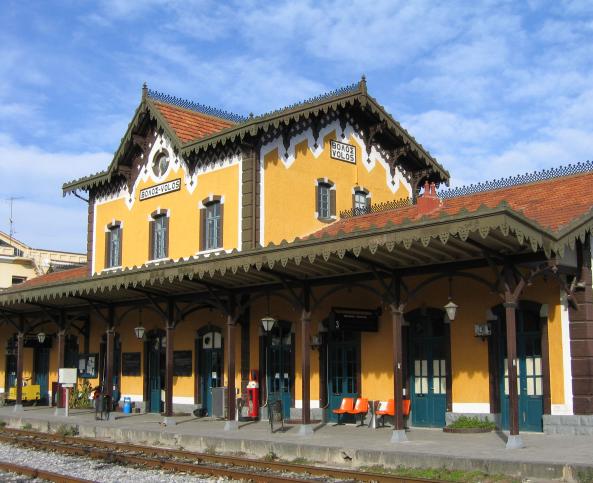
The building of the Railway Station was erected in 1884, according to the aesthetics of foreign architects working at that time on the Thessalian Railways. Its form remains virtually unchanged in time and the museum's floor with a rare material from the history of the railways in the area is on the station floor.
ATHENS STATUE AT VOLOS RAILWAY STATION
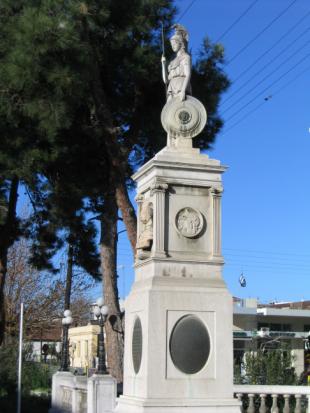
White marble with excellent work details. It was built in 1884 by the Italian sculptor G.Previsan and was placed there on the occasion of the inauguration of the Thessalian Railway.
MUNICIPAL MUSIC SCHOOL
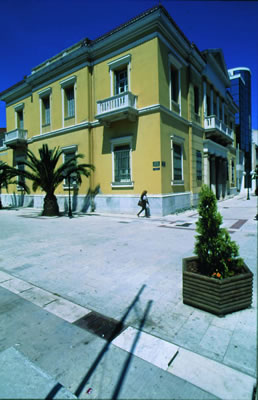
The neoclassical building of the Municipal Conservatory of Volos was founded around 1885 and since 1900 the National Bank of Greece has operated.
ART CENTER GIORGIO DE CIRICO
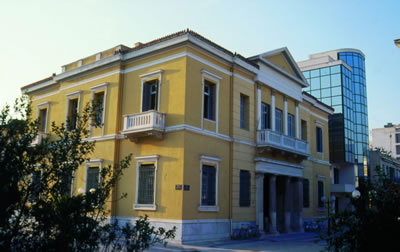
It is right next to the Municipal Conservatory building. It houses the Alekos K.Damtsa Museum and exhibits are hosted by periodical art exhibitions and selection of the Municipal Collection.
MUNICIPALITY OF VOLOS
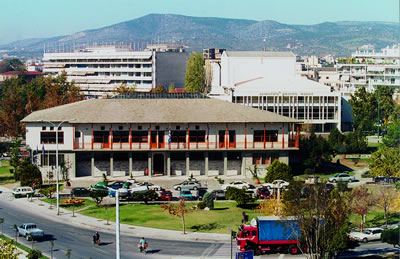
It was built in 1970 with designs by the architect Dimitris Pikionis, who harmonized the style of the Town Hall with the rest of the architecture of the buildings of Pelion.
VOLOS BEACH
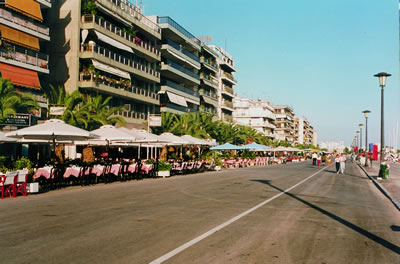
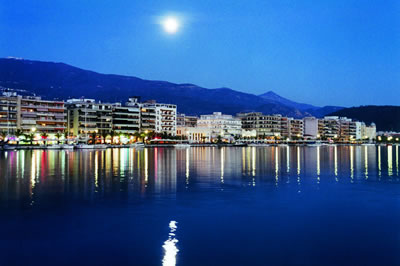
GORITSA HILL
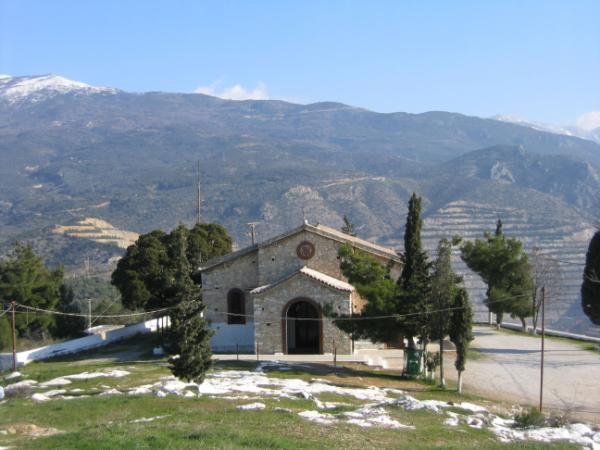
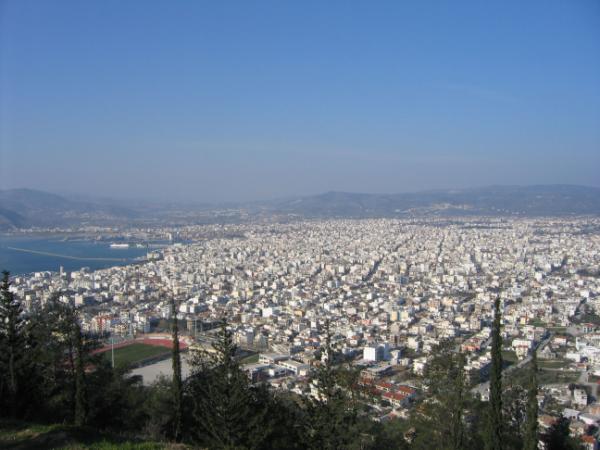
Photo: N. Coxanoglou
To the east of the city of Volos is the Goritsa hill and it is a natural small hill about 200m. above sea level. At the top is the church of Zoodochos Pigi.
Its position was exploited by the Macedonians from the 4th century BC. century BC on Philip II, where a city of 3,000-3,500 inhabitants was built and fortified. Gates were constructed in the north and east to control the passage of people and goods to the west to access the sea and the south to serve military purposes. The city was built on the basis of the Hippodamian system. This city was inhabited from 350-250 BC. and then abandoned because Demetrius the Forceur ordered the settlement of Demetrias. From this position the view is panoramic to the city and the port of Volos.
TEMPLE OF BIRTH OF HOLY MARY (TRIPA GORITSA)
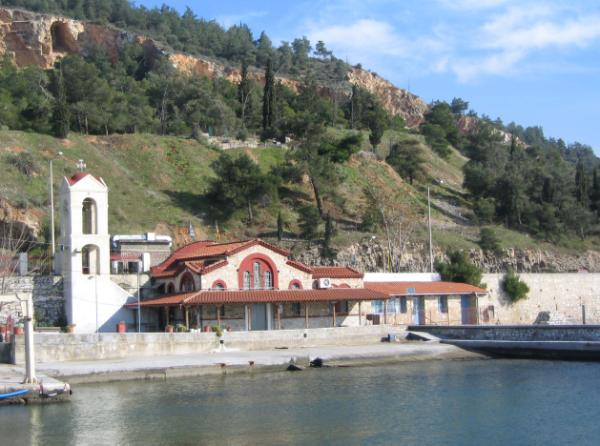
This temple is dedicated to the Virgin Mary's birthday. This church, which is inside a cave, is at the foot of Goritsa and is one of the most picturesque of our city. It operated in 1892 and in 1950 a larger navy was built in front of the cave.
TEMPLE OF HOLY TRIAD

Photo: N. Coxanoglou
The Holy Trinity is a Byzantine chapel and is located next to Achilopouleio Hospital of Volos. It began to be built in 1948 and its inauguration took place in October 1954. Inside it there are pictures of the painter Gounaropoulos. There are frescoes of the "Platetera of the Heavens" at the arch of the sanctuary, the Saints of Anargyri Kosmas and Damianos "and others.
The icons of the iconostasis and frescoes were made at the expense of our fellow citizen Apostolos Papageorgiou.




